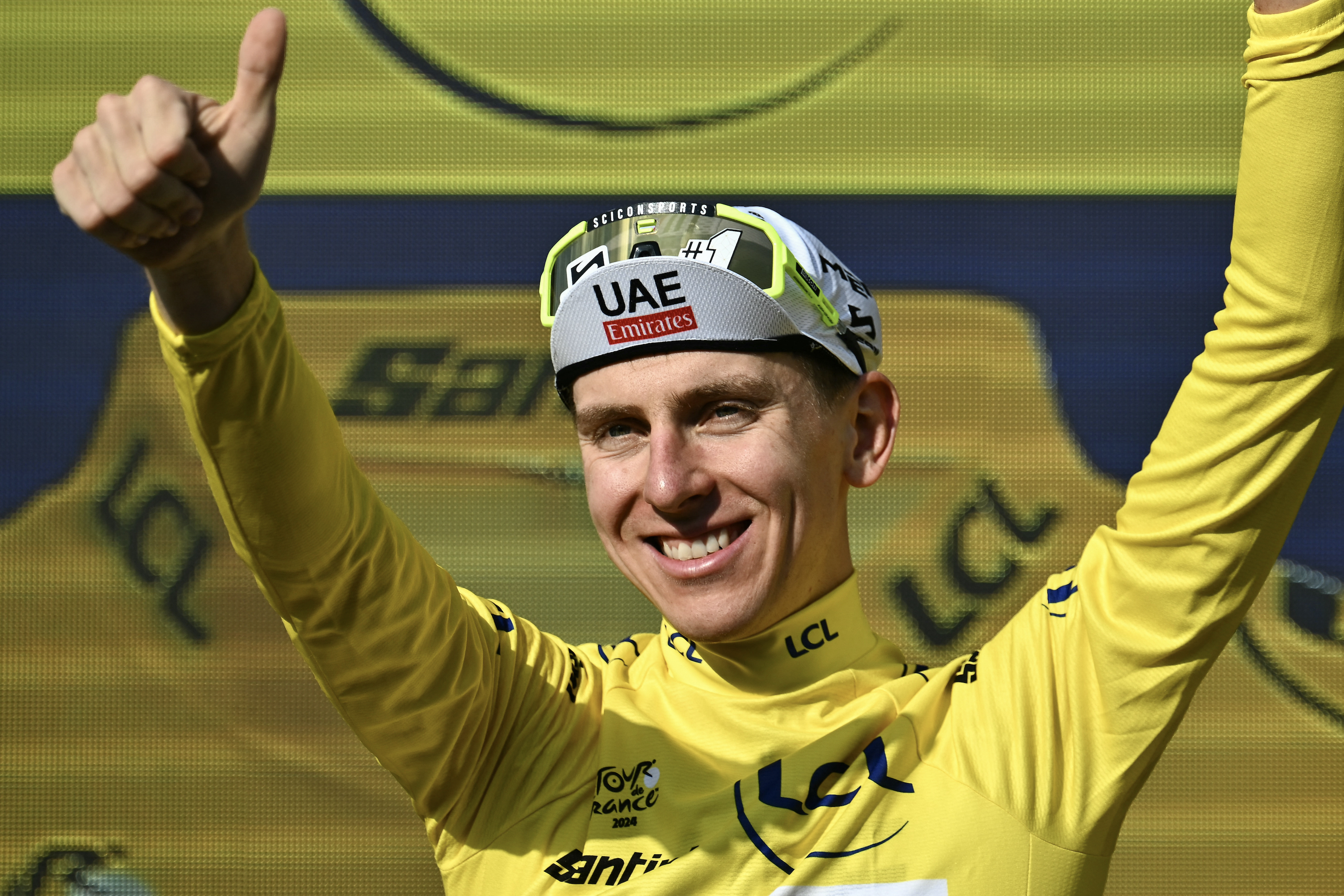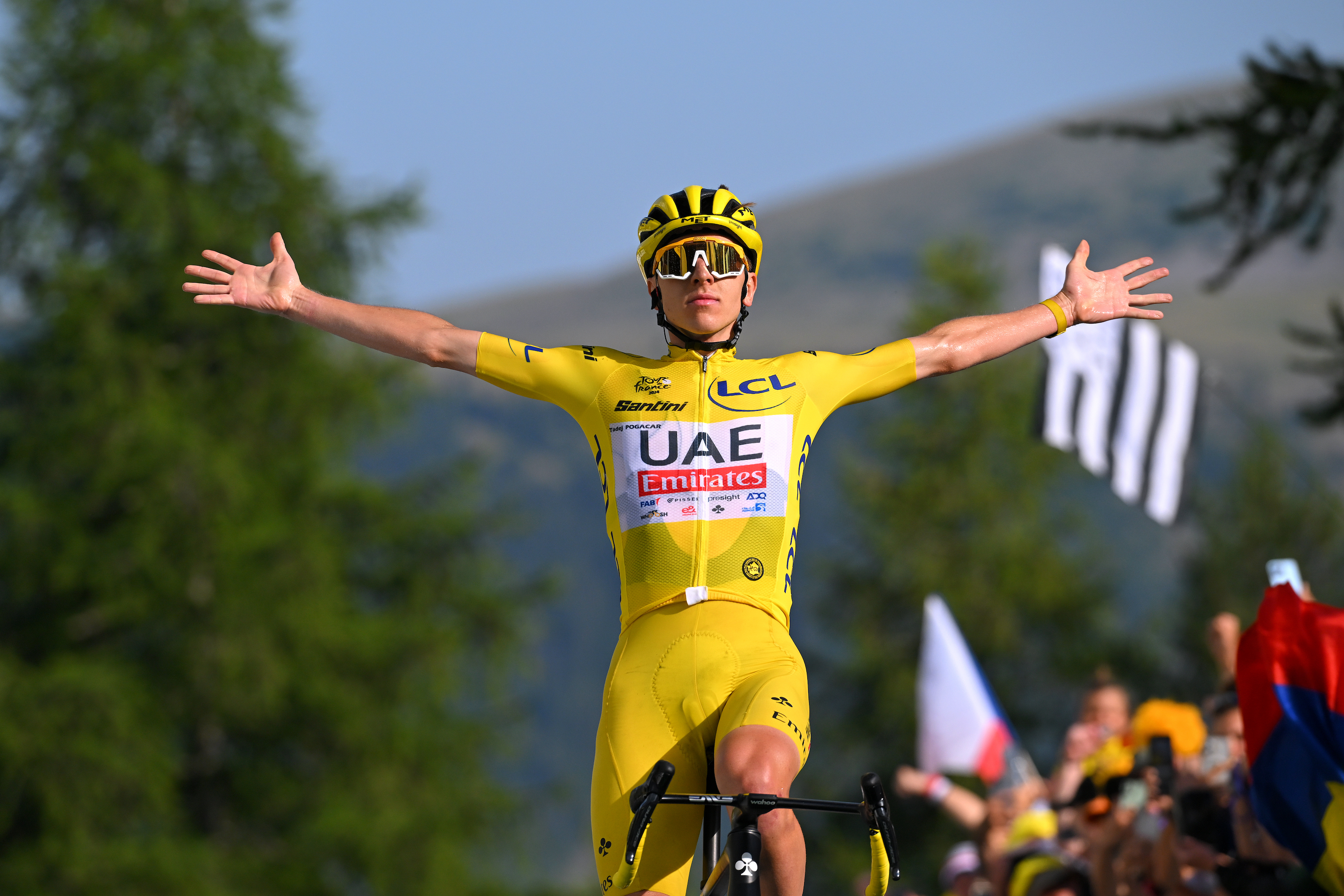How does the general classification work at the Tour de France?
We untangle the rules around overall winners and stage winners – and those tricky bonus seconds


This month we're all very excited about the prospect of the Tour de France. Three weeks of cycling stars battling it out the length and breadth of France, from stunning mountain panoramas to sleepy but extraordinarily pretty villages and towns – what's not to love?
However, if you're new to the Tour – or indeed to stage racing more widely – it can at times seem a confusing business.
Why, for example, might we see the same rider win three stages in a row and yet still not be leading the race? And if you can win stages and still not be leading, who exactly gets to take the overall prize and win at the end? And what about bonuses – how to they work?
The good news is that although it sounds like a puzzle wrapped within a conundrum, it's actually pretty simple once it has been unravelled. Which is what we'll attempt to do right now.
The overall winner
Winning the general classification (also known as the GC) is the biggest prize in the race. Standing on the top of a Grand Tour GC podium at the end of the final stage, resplendent in the leader's yellow jersey, is widely regarded as one of the biggest achievements in cycling.
Also known as the overall winner, the rider to do this is the rider who has finished the race in the shortest time overall across all stages. Every rider will take a certain amount of time to complete each stage, and as the days go by those times are added together for each rider – it's that overall time that will decide the winner.
This means a rider can (and often does) win overall without having won a single stage.
The latest race content, interviews, features, reviews and expert buying guides, direct to your inbox!
If this is starting to trigger high school maths flashbacks don't panic. Take a breath and read on.
It's simple – consistency is king, or indeed queen. If a rider manages to register a high position on each daily stage, their overall time at the end will naturally be considerably lower than that of the stage winner who burns bright on one or two days that are suited to them, only to retreat to the back-of-pack finishes for the rest of the race.
This is especially well demonstrated in the case of the sprinters – the fast riders who gallop home at the head of the peloton on the occasional flatter days, only to finish dozens of minutes behind on the mountain days.
The stage winners
Winning a stage in one of the Grand Tours may not carry the prestige of winning overall, but it is still a victory with a lot of cachet and can be a career-defining moment – especially if that win takes place on a legendary mountain climb such as France's Alpe d'Huez or Italy's Stelvio, or perhaps in a bunch sprint on the Champs-Elysées in Paris.
While only a handful of riders can enter Grand Tour with genuine expectations of a top-five placing on the general classification, a stage victory can be open to everyone, should the stars align on the right day.
A stage winner is the rider who crosses the line first at the end of any mass-start stage – no ifs, no buts and no fancy workings out. Pass the chequered flag before anyone else and you get the big bottle of bubbly to spray over your hapless second and third-placed rivals – just to rub it in.
The time taken to complete each stage counts towards a rider's overall time of course, and that means that the winner of the very first stage automatically becomes the overall leader too, making the first stage one of the hardest-fought wins of the race.
General classification

Let's get down to the nitty gritty. The general classification is simply the daily list of how everyone is doing overall in the race. Right at the top will be the overall leader – the rider who has amassed the least time overall as the stages have passed.
The general classification – the GC – is separate from the daily stage result, which applies only to that particular day.
The leader of the general classification at the end of each day will be presented with a leader's jersey on the podium. Wearing the jersey in a Grand Tour – especially the Giro d'Italia's pink leader's jersey and the famous yellow jersey of the Tour de France – is something every rider aspires to and usually means at least as much as winning a stage.
Unless the wearer is a GC contender – or a rider who can hold their own on the hardest days, time spent in the leader's jersey is often short-lived, but will usually be counted as a career highlight.
Sprint stages
Grand Tour sprint stages – the flatter outings where the sprinters can be confident of victory – throw up a unique situation in that, bar bonus seconds, the entire race tends to finish at the same time. This is because unless there is a gap of more than a second within the bunch, all riders are given the same time.
This means that, unlike a mountain stage that will see riders finish in dribs and drabs, with some more than half an hour behind, the sprinters can rarely get more than a few bonus seconds ahead of anyone else in the race on general classification.
With sprinters almost never being suited to mountain riding (think heavier, more powerful), this means they are never regarded as GC contenders. The only obvious exception to this in the modern age would be French rider Bernard Hinault, who won bunch sprints and Grand Tours in the 1980s.
How do bonus seconds work?
While the overall leader and winner (lowest time across all stages), and the stage winner (first across the line on the day), are simple enough – bonus seconds do cloud the water a little. But not much – they just mean a little extra GC arithmetic.
Bonus seconds are awarded to the first three riders on each stage – in the case of this year's Tour de France it's 10, 6 and 4 seconds for places one, two and three. They're not added on to their time, of course (which would penalise the rider), rather they're taken off.
Grand Tours – and other stage races also see one or two intermediate sprints each day, where bonus seconds are also on offer, although not at the Tour.
The bonus seconds on the finishing line can play a key part in general classification tactics, especially when time is tight towards the end of the race and one or two riders might be closely matched.
The other classifications

Lorenzo Fortunato wears the blue mountains jersey after stage three in this year's Giro d'Italia
In any stage race, the 'general' isn't the only classification. Again – it will be the most prestigious but there are usually four competitions running concurrently: mountains, points, young rider and team.
Each has its own jersey (bar the teams competition) that the leaders wear throughout the race, and in this year's Tour the jersey colours are as follows: mountains - red polka dots; sprints - green; young rider - white. Not unlike the leader's yellow jersey, the prestige of wearing one of these – even just for a day – should not be underestimated, and to win one overall at the end of the race is a serious achievement.
The rules are simple – though not the same – for each classification. The young rider and teams competition takes the overall time across all stages, with the teams competition taking the overall time of each team's top three riders on the general classification, added together.
Both the mountains and the points classifications run on a points system, with points awarded at the top of every classified climb and the amount of points on offer reducing with the severity of that climb. The points competition is usually won by a sprinter, with points on offer on the days intermediate sprints and at the end of each stage.
So there we have it – the general classification, the overall, the GC, whichever you prefer, explained. Hopefully if you weren't sure before you now have at least a slightly better understanding of how it all works.
All that remains now is to sit back and enjoy the racing.
After cutting his teeth on local and national newspapers, James began at Cycling Weekly as a sub-editor in 2000 when the current office was literally all fields.
Eventually becoming chief sub-editor, in 2016 he switched to the job of full-time writer, and covers news, racing and features.
He has worked at a variety of races, from the Classics to the Giro d'Italia – and this year will be his seventh Tour de France.
A lifelong cyclist and cycling fan, James's racing days (and most of his fitness) are now behind him. But he still rides regularly, both on the road and on the gravelly stuff.
You must confirm your public display name before commenting
Please logout and then login again, you will then be prompted to enter your display name.
